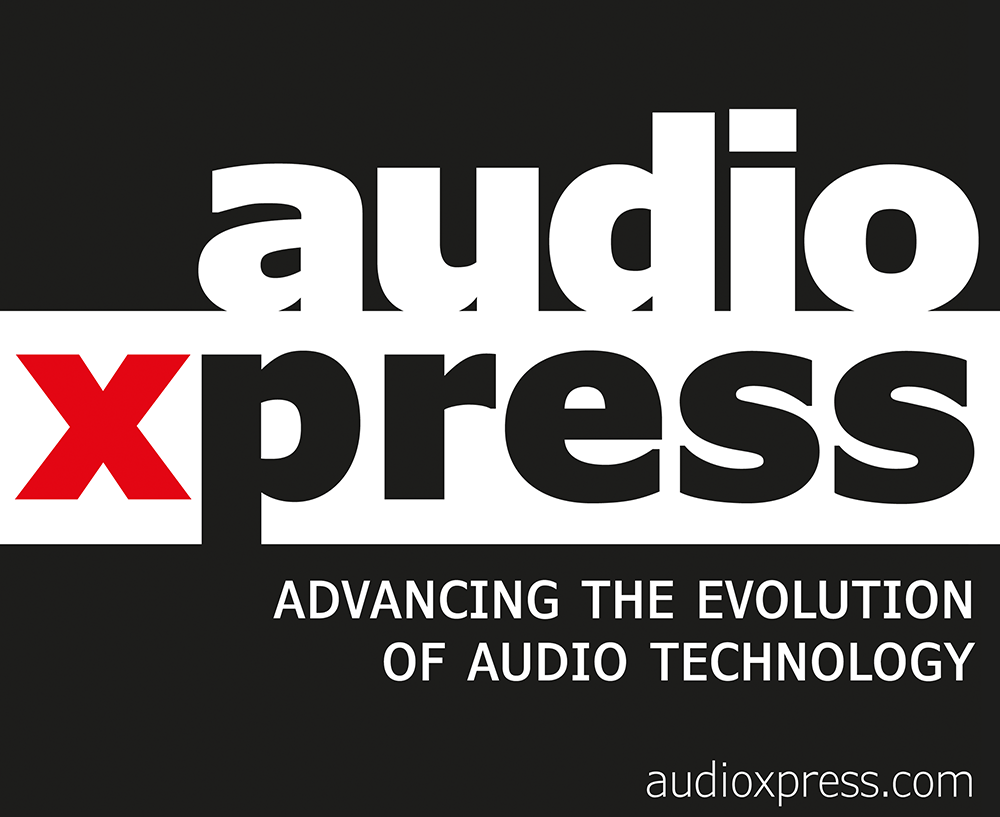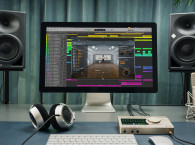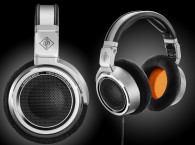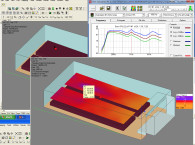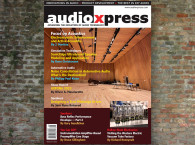 The August 2025 issue is our traditional Acoustics-focused edition, and this year audioXpress brings an updated perspective on room acoustics simulation and auralization. We start with a Market Update about New Dimensions in Acoustics, with details on how companies are leveraging more advanced simulation and analysis tools to address acoustics-related solutions. From AFMG Technologies EASE 5 evolution with the new Acousteer real-time simulation engine, to L-Acoustics investment in active acoustics, direct collaboration with Treble Technologies on auralization of projects, to the latest efforts by Amadeus Acoustics from acoustic enhancement systems to be solutions for immersive sound reinforcement systems. Plus updates on new tools and solutions from Eclipse Audio, Fulcrum Acoustic/Fulcrum Immersive, and SoundPLAN.
The August 2025 issue is our traditional Acoustics-focused edition, and this year audioXpress brings an updated perspective on room acoustics simulation and auralization. We start with a Market Update about New Dimensions in Acoustics, with details on how companies are leveraging more advanced simulation and analysis tools to address acoustics-related solutions. From AFMG Technologies EASE 5 evolution with the new Acousteer real-time simulation engine, to L-Acoustics investment in active acoustics, direct collaboration with Treble Technologies on auralization of projects, to the latest efforts by Amadeus Acoustics from acoustic enhancement systems to be solutions for immersive sound reinforcement systems. Plus updates on new tools and solutions from Eclipse Audio, Fulcrum Acoustic/Fulcrum Immersive, and SoundPLAN.Expanding on these market updates, Daniel Gert Nielsen (Treble Technologies) writes about the Room Impulse Response (RIR) Paradox and how audio machine learning needs better physics, not just more voices. In this fascinating analysis, the senior product manager at Treble reflects on how the acoustic realism of physics-based environmental simulation and auralization can contribute to advancing training models for speech enhancement, source localization and separation, as well as adaptive noise cancellation. The article proposes Room Impulse Response (RIR) as a way to capture complex sound interactions in any room, and as a critical ingredient that determines the realism and effectiveness of the training data.

The next article, by Stefan Feistel and Wolfgang Ahnert, two founding members of the Ahnert Feistel Media Group (AFMG) and renowned experts in the field of acoustics, provides the technical formula that allowed solving the old bottleneck of the computational demands for accurate simulation of the direct sound field in medium to large venues. A significant new processing architecture for acoustic simulation that represents significant progress in the iterative process of design, calculation, and analysis with real-time acoustic simulations. The detailed solution is now implemented in the Acousteer Engine, as part of the Third Edition of EASE 5, the cornerstone sound planning tool for audio professionals. AFMG's new Acousteer engine introduces a paradigm shift, transforming direct sound field simulation into an interactive, real-time experience, empowering users to design sound systems with unprecedented accuracy.
Expanding the acoustics-focused articles in this August 2025 issue of audioXpress, Neil Shaw (Menlo Scientific Acoustics) explains everything about Anechoic Chamber Design Fundamentals. The name behind reference walk-in anechoic chamber projects for Microsoft, Apple, and countless universities and research institutions, Neil Shaw shares his acquired expertise and gathered insights on the acoustic design, planning, and implementation of these critical facilities. In his article, which summarizes and updates several talks he offered on the topic, he offers his valuable experience-founded overview of some of the physical, acoustical, electrical, and other fundamental considerations that are essential in acoustic anechoic chambers.

In this month’s Sound Control article, Richard Honeycutt expands on his own experience as an active acoustics consultant and writes about the "Acoustical Effects of Floor Finishes." Floor materials significantly impact reverberation time in large spaces since most are highly reflective and/or provide little sound absorption. In any room where acoustics are important—be it a studio, a rehearsal room, a lobby, a conference room, a classroom, an auditorium, a lecture hall, a sanctuary, or whatever — these floor effects must be considered. The article details how to have the critical parameters for multiple floor coverings in mind when addressing room acoustics, taking into account the frequency absorption values over the intended key reverberation time (RT) parameters. The article also provides guidance on analyzing an integrated acoustics model, considering the impact of the floor finish on other room surfaces.
Included in this issue, Dimitri Danyuk reviews the latest book by Ethan Winer, which was just released by Routledge/Focal Press. The Audio Circuits Cookbook - Building Blocks and Tools to Design Professional Audio Devices is exactly what the title promises — a rich, no-nonsense collection of audio-related circuits that bridges the gap between textbook theory and real-world application. The book is neatly organized into 11 chapters across four sections, spanning a total of 310 pages. Equally useful for an audio hobbyist with a basic understanding of electronics or an experienced designer looking for a quick-reference companion, this book delivers both inspiration and utility.

Also in this issue, Philipp Paul Klose reviews the new Neumann RIME (Reference Immersive Monitoring Environment) solution. At a time when multiple companies have released products solving issues in the field of audio reproduction and monitoring over headphones, Neumann surprised with a complete and affordable solution that will be immediately appreciated by users of the brand’s studio monitors and headphones. The RIME headphone correction and binauralizer application is intended to be used with the Neumann NDH 20 and NDH 30 headphones, making immersive and stereo production workflows practical and reliable. The plugin allows users to monitor stereo, surround, and immersive formats up to 7.1.4. It enables music producers and mixing engineers to monitor immersive formats like Dolby Atmos in reference quality when a multichannel loudspeaker setup is unavailable or when working on the go.
This issue concludes with another Microacoustics Modeling Primer by modeling and simulation expert René Christensen (BSEE, MSc, PhD), focusing on The Numerical Modeling. This two-part article (the first was published in audioXpress in July 2025) is a deep-dive on the topic of modeling acoustic losses in small or narrow geometries, discussing various thermoviscous loss models, and categorizing these models into analytical and numerical approaches. After discussing the analytical implementation methods in the first part, this article now expands on the numerical modeling, from Helmholtz equations to the Full Linearized Navier-Stokes ((F)LNS), and other simpler, engineering-focused models.

Please remember that all the content featured in every issue of audioXpress is the reason this publication continues to reinforce its role as an essential resource for the audio industry, month after month, 12 times per year. Your support and that of our advertisers is what allows us to keep this publication in print and on all the digital platforms as well as pay our independent authors and contributors for their work.
Subscribe if you haven't done so in order not to miss future issues or renew your subscription. Subscribing to the digital online version allows immediate access and is available here: audioXpress Subscription Services
If you wish to buy a single printed issue or the complete audioXpress archive on USB, from 2000 to 2025 (yes, including the latest issue), just visit our online shop at www.cc-webshop.com.
And check out the new options to access the audioXpress Digital archive:
https://simplecirc.com/subscribe/audioxpress
Don't miss out, get your copy of audioXpress right now at www.gotomyxpress.com
